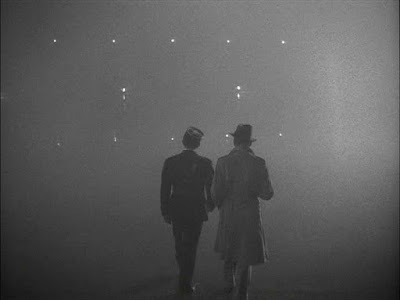Needless to say, that first phone call from Dan Herman was rather intriguing, notwithstanding the line was having the hiccups or dropping altogether several times. Because of that inconvenience, we decided to get back in touch over the next few days, both by phone and via emails. I was very interested in the project despite being booked solid with Egmont. Dan, on his end, was determined to find the right artist for the job, despite the serious health challenges he was facing at the time. We both decided to put our best foot forward and establish the premises of “The beginning of a beautiful friendship”
Anyway, these are the more salient points of our initial discussions and negotiations, which are also the reasons why I decided to accept what at first seemed a “Mission Impossible”
Here we go:
1) THE STORY WAS WRITTEN BY PETER DAVID!
Peter David’s fame and stature as a writer, by themselves, would have been motivations enough for any respectable artist to jump enthusiastically on board. In my case, this opportunity represented a welcomed reunion with “PAD” with whom I had previously worked on “Captain America” (Marvel) and “Justice League Task Force.” (DC) In 1988, PAD had also written the script of a Phantom mini-series for DC. (Read more about it, here.)
[I learned later that Peter had only written half of the series due to some substantial revisions to the script which initially included another famous character from a different franchise.On top of that he would have been unable to help in the promotion of the project due to contractual obligations with another publisher… but we’ll save all these details for later.]
 |
| Sal Velluto and Peter David at the 2014 FanEx in Salt Lake City, Utah. |
2) THE STORY WOULD STAR A “CLASSIC” PHANTOM!
Hermes Press had already established itself as publisher and estimator of classic Phantom stories: from the original newspaper strips to the legendary comic publications by Gold Key, Charlton, and King. When their license from King Features Syndicate was extended to publishing original material, it came natural to produce stories which would be faithful to Lee Falk’s narrative and artistic approach. The story itself was set in the early 1940s and featured as co-protagonists Jimmy Wells and The Baroness, two characters straight out of the very first comic strips (“The Singh Brotherhood” and “The Sky Band”)
The choice of a “Classic” and “Canonical” Phantom was intentionally in contrast with more recent “Spurious” interpretations by other publishers.
 |
| The very first panel of the very first Phantom comic strip. |
3) THE PROJECT WOULD REQUIRE A “CLASSIC” ARTIST!
Mr. Herman told me I wasn’t the first candidate to be considered for the job. There had been others who didn’t qualify for various reasons, including an unnamed artist who plainly stated: “I don’t like The Phantom!” It was during this protracted quest for the right artist that my friend Pete Klaus suggested my name to Dan and gave my qualifications as an established Phantom artist. I felt confident I would fit the bill since I had made my living for several years already, drawing The Phantom in a classic style.
4) THE PRICE IS RIGHT... (Well, almost)
When it came to put the money where our mouth is, things became a little more challenging. (So what else is new?) A flat fee to be divided in monthly installments was initially proposed to me. If I divided the total amount by 120 interior pages and 6 covers (both penciled and inked) I would have ended up with considerably less money than I was making with Egmont. After some further negotiations, I signed a regular contract (more in line with industry standards) where I would receive different fees for interior pages and covers and I would be paid 15 days after delivering the electronic files of each single cover and/or each batch of 10 interior pages., which would have guaranteed - in theory - a regular and continuous cash flow. ( Ultimately, things didn’t go exactly this way. More on this, later)
Unlike my contracts with other major publishers (Marvel, DC, Egmont) this contract didn’t include any royalties whatsoever. I was also accepting a considerable cut in pay compared to my Egmont fees, but I was willing to sacrifice some income in order to be back on the American market, working on the grandfather of modern super-heroes: “The Phantom; The Ghost Who Walks; The Man Who Cannot Die.”
Once we found ourselves on the same page, Dan and I signed over the dotted line. Now I was ready to Rock ‘n’ Roll! About one month had passed since that first phone call.
Coming up next: "Painting Myself in a Corner."














Ready to rock!
ReplyDelete